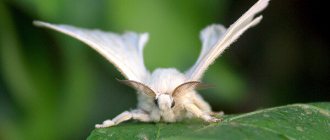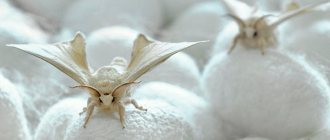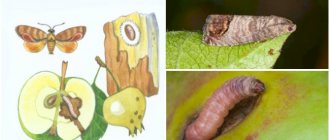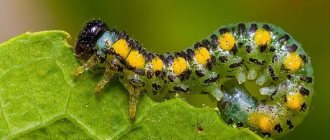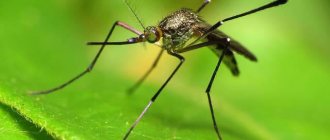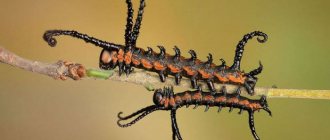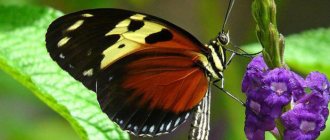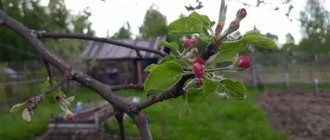Description and features
The silkworm goes through four stages in its development.
First the eggs are laid. The laying of eggs is called grena. Larvae or mulberry worms emerge from the eggs. The larvae pupate. Next, the last, most amazing phase of transformation occurs - the pupa reincarnates into a butterfly (moth, moth). The silkworm in the photo most often appears in the form of its winged essence, that is, a moth. It is rather nondescript, painted smoky white. The wings have a standard appearance for Lepidoptera, consist of 4 segments, and spread approximately 6 cm.
The pattern on the wings is simple: a large web of longitudinal and transverse lines. The silkworm butterfly is quite furry. She has a furry body, fuzzy legs and large hairy antennae (antennae).
The silkworm has a feature associated with long-term domestication. The insect has completely lost the ability to take care of itself: butterflies are not able to fly, and voracious caterpillars do not try to find food when they are hungry.
The origin of the silkworm has not been reliably established. The domesticated form is believed to have originated from the wild silkworm. The free-living silkworm butterfly is smaller than the domesticated one. It is capable of flight, and the caterpillar independently devastates thickets of mulberry bushes.
Order Lepidoptera, or Butterflies (Lepidoptera)
Silkworm. Gypsy moth. Hawk Moth Death's Head. hawthorn
rice. 1. Structure of the oral apparatus of the sucking type: 1 - lower jaws (proboscis), 2 - mandibular palp, 3 - compound eye, 4 - simple ocellus, 5 - antenna, 6 - clypeus.
They have two pairs of large membranous wings covered with chitinous scales. The scales are modified hairs and are often brightly colored. The scales together often create bizarre patterns on the wings. The wingspan ranges from 3.2 mm in the little moth (Nepticula filipendulae) to 300 mm in the cutworm (Thysania agrippina).
The head of butterflies bears a pair of compound eyes, antennae of varying lengths and shapes, and a highly specialized sucking-type mouthparts (proboscis). The proboscis consists of elongated maxillae that form a tube and curl up into a spiral; the remaining parts of the oral apparatus are reduced (Fig. 1). Lepidopteran adults feed on nectar and plant sap.
Development with complete transformation. Butterfly larvae are called caterpillars and feed on plant matter. They have a worm-like shape and a gnawing type of mouthparts. The mandibles are highly developed, and on the lower lip there are openings for a pair of silk-secreting glands. On the thoracic segments there are three pairs of thoracic articulated legs, on the abdominal segments there are usually 5 pairs of false (non-articulated) abdominal legs. In moths and some cutworms, the number of abdominal legs is reduced to 2–3 pairs; in some lower groups it increases to 7–8 pairs. The pupae are covered.
The order Lepidoptera is divided into suborders: Frenata, Rhopalocera, etc.
rice. 2. Ringed silkworm (Malacosoma neustria). A - oviposition, B - caterpillar, C - pupa, D - female.
The heteroptera suborder includes butterflies with wings of different shapes (the front ones are triangular, the rear ones are rounded) and a typical sucking proboscis. The suborder Heteroptera is divided into families: Leafrollers (Tortricidae), Glassworms (Aegeriidae), Cocoonworms (Lasiocampidae), True silkworms (Bombycidae), Wolves (Lymantriidae), Cutworms (Noctuidae), Moths (Geometridae), Hawkmoths (Sphingidae) and many others.
The ringed silkworm (Malacosoma neustria) belongs to the cocoon moth family (Fig. 2). It got its name because of the shape of the oviposition: the female glues the eggs around thin branches, arranging them in a gentle spiral. As a result, the masonry has the appearance of a wide ring, tightly enveloping the shoot. Ringed silkworm caterpillars greatly damage fruit and other deciduous trees.
rice. 3. Silkworm (Bombix mori): A - caterpillar, B - pupa, C - cocoon, D - female, E - male.
The silkworm (Bombix mori) belongs to the family True silkworms (Fig. 3). The mulberry silkworm is bred on special farms to obtain silk from the cocoons of pupae. The caterpillars are fed with mulberry or mulberry leaves. Sericulture as a branch of the economy has existed in China since ancient times.
The gypsy moth (Limantria dispar) belongs to the Volnyanka family (Fig. 4). Butterflies of this species are characterized by sexual dimorphism. The span of the white wings of the female is up to 7.5 cm, the span of the brownish-gray wings of the male is up to 4.5 cm. One female can lay up to 1000 eggs. The caterpillars make nests and completely eat the leaves, denuding the trees. The gypsy moth is one of the most common pests of forests and orchards. Polyphagous.
rice. 4. Gypsy moth (Limantria dispar): A - oviposition, B - caterpillar, C - pupa, D - female, E - male.
The death's head hawk moth (Acherontia atropos) belongs to the Hawkmoth family (Fig. 5). The largest species of hawkmoth found in Central Europe. Wingspan up to 130 mm.
On the back there is a pattern resembling a skull. Every year in May and autumn, butterflies fly to Europe from the Mediterranean and North America. They fly beautifully, usually at night. They love honey and sometimes climb into hives. Caterpillars live on nightshades, jasmine, euonymus, and raspberries. They pupate in the soil. They overwinter at the pupal stage.
The suborder Maculaceae is divided into families: Bluebirds (Pieridae), Nymphalidae (Nymphalidae), Bluebirds (Lycaenidae), Swallowtails (Papilionidae) and many others.
Hawthorn (Aporia crataegi) belongs to the Belyanka family (Fig. 6). Wingspan 60–70 mm. The wings are white with sharply visible black veins, the pollen is sparse. Eggs are laid on the underside of leaves of apple, pear, plum, cherry, apricot and other trees. Young caterpillars live together. Third instar caterpillars overwinter. For the winter, they make a common “winter” nest inside a dry leaf covered with mulberries, but each caterpillar is in a separate white cocoon.
Podalirius (Iphiclides podalirius) belongs to the swallowtail family (Fig. 7). The caterpillars feed on the leaves of thorns and fruit trees. The pupae overwinter. It is listed in the Red Book of Russia as a species that is declining in numbers.
rice. 5. Death's head hawk moth (Acherontia atropos): A - imago, B - caterpillar.
rice. 6. Hawthorn (Aporia crataegi): A - oviposition, B - separate egg, C - caterpillar, D - pupa, E - female.
rice. 7. Podalirius (Iphiclides podalirius): A - caterpillar, B - pupa, C - imago.
► Insects with complete metamorphosis (Holometabola) also include the following orders:
- Order Reticulates (Neuroptera)
- Order Coleoptera, or Beetles (Coleoptera)
- Order Hymenoptera (Hymenoptera)
- Order Diptera (Diptera)
- Order Fleas (Siphonaptera, or Aphaniptera)
- Brief description of the class Insects
- Classification of the class Insects
► Go to the table of contents of the book “Zoology of Invertebrates. Theory. Tasks. Answers"
What does a gypsy moth look like?
The gypsy moth is a butterfly belonging to the order of Lepidoptera from the family of moths. A distinctive feature of these insects is the noticeable differences between male and female individuals.
Differences in adults are noticeable in color and shape:
- Females - the size of the wings when unfolded reaches 90 mm. The thick body has the shape of a cylinder. A grayish fluff is visible on the abdomen. The antennae are thin and long.
- Male - wingspan 40-50 mm, body thin, covered with hairs. The color of the wings is brown, the surface is covered with a pattern of dark spots and broken lines. The antennae are comb-like.
Gypsy moth butterflies prefer open forests, dry places with sufficient light. The first centers of spread are usually located on the edges. During droughts, large outbreaks of mass reproduction of silkworms occur. This species is the leader among pests in terms of the number of outbreaks of reproduction and the duration of these periods.
How to deal with gypsy moth?
The best measure to combat gypsy moths is to prevent the appearance of pests. Such measures will help protect your garden not only from this type of insects, but also from other parasites.
- The easiest way is mechanical removal of egg clutches. For this purpose, it is necessary to periodically inspect the garden plot and check trees and fruit bushes for the presence of insect nests. If you find laid eggs, they should be scraped out and burned (the recommended method); as an alternative, you can bury the find in the ground, but to a depth of at least ½ meter. Be sure to use protective gloves when working, since the hairs that cover the top of the eggs can cause an allergic reaction.
- Collecting caterpillars can also be an effective control measure for gypsy moths. You can use special traps in the form of glue rings (paper or oilcloth pieces coated with a layer of glue or natural resin) wrapped around the trunk. Moving along a tree, light caterpillars will find themselves trapped and will not be able to get out of it. If you decide to collect the larvae by hand, be sure to protect your hands; after touching the silkworm hairs, ulcers and redness may appear on the skin.
- Preventive treatment with active compounds is suitable for old trees; it is not recommended to coat young bark with such agents. To treat fruit plants against gypsy moths, use a mixture of mineral oil and kerosene, taken in a 1:1 ratio.
- Destroying silkworm cocoons is possible during the flowering period of trees, this way you will prevent the appearance of adults, which will subsequently reduce the population.
- Spraying with modern insecticides remains one of the most effective measures to combat garden pests. In early spring, “Virin-ENZh” is suitable for this (a viral drug - cannot be used during fruit growth). At the beginning of flowering, “Chlorophos”, “Phosfamide”, “Metaphos”, etc. are suitable. “Nitrafen” has proven itself well, but it can be used before the buds bloom on the trees.
These easy-to-use tips will help you organize your fight against gypsy moths as efficiently as possible, without requiring large investments.
AfterText #1
Natural enemies
In nature, the enemies of the silkworm are:
- birds (the sparrowhawk especially likes the silkworm);
- insectivores that eat larvae and butterflies (for example, they are a treat for squirrels);
- parasitic insects (for example, these are hedgehog flies or tahini, which lay eggs in the body of the silkworm);
- pathogens (eg pebrina).
Sericulture involves human struggle with the deadly enemies of the silkworm.
Reproduction of silkworms
Heavy females rarely fly; they sit on the bark of trees and attract males with the help of pheromones. Males start flying a few days earlier. They are especially active in the evening. They fly long distances in search of a mate. After fertilization, females lay eggs under the bark of trees at a height of 3-4 m. They are round in shape, yellow or pinkish in color. Size – 1 mm, number of eggs in a gypsy moth clutch – 100-1000 pieces. The insect spends most of its life in the egg state - about 8 months.
An embryo is formed inside the egg shell, which remains to overwinter. In spring, when the temperature rises to +100, the first caterpillars appear. They sit motionless for some time, then crawl along the tree. The body of small caterpillars is covered with bristles and air bubbles. This allows them to travel with gusts of wind. To travel long distances, insects can release webs.
Interesting fact. The caterpillar is the only form of gypsy that feeds, accumulating energy for the remaining phases of development.
The gypsy moth belongs to the cocoon moth family. The caterpillar appears with sixteen legs. At birth she is light yellow, but quickly darkens and turns brown or black. There are several longitudinal rows of warts on the body.
Information. Gypsy moth eggs are extremely resilient; they can withstand temperatures down to -50.
After settling in a new territory, active feeding begins. Young caterpillars eat during the daytime, gnawing small holes in the leaves. After 3-4 months, they switch to feeding at night, eating the entire leaf. In addition to foliage, the pests’ diet includes buds, young shoots, and flowers. Depending on the climate zone, caterpillars require from 50 to 80 days to develop. They then pupate. This occurs in June-July, the pupal stage lasts 10-15 days.
Information. The optimal temperature for insect growth is +20-25; if it drops to +10, development stops. Male caterpillars go through 5 larval stages to the imago (adult) stage, females – 6 stages.
Mating and egg laying
Gypsy moth butterflies emerge from their pupae in July and August, first males, a little later - females. They fly low above the ground in the evenings, find partners and mate.
After mating, each female lays from 100 to 300 eggs on trunks, branches or tree roots protruding from the ground.
Larval development inside the egg
The eggs of the gypsy are smooth, round, slightly flattened on top. The female covers the clutch with hairs from her abdomen to give it a dark to light brown color. Most of the eggs laid overwinter above the snow cover and are exposed to low temperatures, which does not lead to their death.
Caterpillar stage
Caterpillars hatch from eggs at an average daily air temperature of 4–16 °C; usually their appearance coincides with the beginning of the growth of leaves and needles on the fodder trees.
The caterpillars actively feed for 2–2.5 months, after which they gather on trunks, branches, in the crowns of trees and shrubs and pupate.
Pupa stage
Gypsy moth pupae are dark brown or matte black in color. They are covered with sparse tufts of short brown or red hairs. The length of the pupae is from 18 to 37 mm.
Description and life cycle of the pest
On average, a female lives for several weeks. During this period, she manages to lay up to a thousand eggs. The clutch changes color over time, which indicates the degree of maturation of the larvae. Eggs are very resistant to external factors. They tolerate low temperatures well, so during the winter the embryonic development of the gypsy moth does not stop.
This process ends with the onset of spring. The provision of energy material to all stages of insect development - eggs, pupa, as well as the adult individual itself - is carried out by the caterpillar. That is why the period of her feeding is so long - from 2 to 2.5 months. The first food of caterpillars is egg shell. So they can exist for 4-5 days, waiting for a favorable time to migrate.
We suggest you read: How to bathe a cat correctly and how often you should do it
The adult of the gypsy moth is a butterfly. They have striking sexual dimorphism, which is reflected in the name of the species. There are several geographical races (populations). In Russia there is a division into European, Siberian, Far Eastern and Asian races.
Imago (female). Butterfly; The wingspan of the European race is 60–90 mm, and that of the Asian race is 90 mm or more. The color of the forewings is white or yellowish, with a pattern in the form of thin zigzag lines of almost black color; sometimes reduced. Hind wings yellowish-white. The pronotum is white, the abdomen is yellow, thick, cylindrical. At the end of the abdomen there are brown-black or brown-yellow hairs. The antennae are weakly combed and black.
The adult (male) is significantly smaller than the female. A butterfly with a wingspan of 40–50 mm in the European race, and up to 57 cm in the Asian race. The color of the scales of the fore wing is brown-gray, forming a zigzag pattern, rougher than that of females. The hind wings are brown, with a yellowish tint. The antennae are strongly combed, the body is gray-brown. Abdominal thin.
The flight of gypsy moth butterflies begins in July, sometimes a little earlier. Flight dates depend on the geographic location and climatic conditions of the current growing season. Males emerge 5–7 days earlier than females. Individuals are most active in the evening, but often the flight of this species can be observed during the day, especially in cloudy weather.
The mating period begins immediately after emerging from the pupa and drying out. After mating, the females begin oviposition. Trees with rough bark are chosen, not necessarily forage species. Fertility - from 100 to 1200 eggs. The female's clutches are covered with hairs from the abdomen. In the European part, masonry is found on pine, birch, spruce, larch, and linden.
In the northern part of the range, clutches are located at the root and on stumps, in the southern part - along the entire surface of the trunk. In Siberia, masonry is observed on outlier rocks; in the Far East, they are found on leaves, rocks, under stones, dead wood, on the walls of houses, and pillars. Among the Far Eastern race, layings on trunks were not recorded.
Egg. Initially yellow, then yellowish or pinkish-gray. The shape is round, flattened on top. The surface is smooth. Egg diameter is 1–1.2 mm. In winter, the almost formed larva leaves, but inside the egg. Eggs are frost-resistant and can withstand temperatures down to –50°C. Embryos overwinter in the form of clutches that are similar in appearance to yellow-brown felt pads.
Larva (caterpillar). The color of the integument is gray with a black, red, yellow or gray pattern. All segments have a row of warts with setae. On the first segments they are blue, on the rest they are red. The dominant color in the European population is gray. No more than 7.5–8% of black caterpillars survive. Red-colored individuals die by the age of 4–5. In the Khabarovsk Territory, there is a predominance of red caterpillars (99–99.5% of the population), there are no black ones. The larva reaches 80 mm in length.
We invite you to familiarize yourself with Angelfish: care and maintenance, how to distinguish a female
In spring, when the average daily temperature reaches 5–6°C, caterpillars begin to hatch. After hatching from the eggs, they sit in the “mirror” for several days, then rise into the crown. During this period, the caterpillars are light, their body is covered with thick bristles with air bubbles (aerophores) at the base. This adaptation facilitates the migration of the species over considerable distances with the help of the wind. In addition, the caterpillars release cobwebs, which act as parachutes and also facilitate the transfer of individuals. After dispersal, feeding begins.
Optimum development occurs at a temperature of 20–25°C. In this case, the larva develops within 35–40 days. In colder summers, development slows down to 50–80 days. A temperature of 10°C is critical - at this value, development stops. The sum of average daily temperatures for the full development of the species should be 650–700°C. Male caterpillars go through five instars, female larvae go through six.
The pupa is covered, since the rudiments of the antennae, wings and legs are covered with a liquid (secretions of the larval glands) that harden in air. Length - 2–3.8 cm. The color of the integument is dark brown, matte. Tufts of red hairs are located throughout the body.
Pupation occurs in June - early July and occurs on trunks, in cracks in the bark, and in the crown. The caterpillar is entwined with several webs, but does not form a cocoon. The phase lasts 12–20 days.
Nutrition
The gypsy moth butterfly has no mouthparts and does not feed at all, and the caterpillars are very voracious and polyphagous. In different habitats, gypsy is associated with different species of trees and shrubs.
The main food items for caterpillars are:
- in Europe, the Caucasus and the Far East - various types of oak;
- in the mountain forests of the Caucasus, Crimea and Carpathians - hornbeam and beech;
- in forest-steppes and small-leaved forests of Siberia - birch and aspen;
- in the mountain forests of the Urals and Sayan Mountains - various types of larches;
- in the mountains of the Altai Territory - larch, fir, pine and cedar;
- in the mountains of Central Asia - fir, spruce, pear and maple.
Caterpillars that have recently hatched from eggs feed mainly during daylight hours, while they migrate within the crown. Older caterpillars feed primarily at night, especially in persistent warm weather.
Development
Females lay eggs in depressions in the bark of trunks and stumps, releasing them in groups of several hundred pieces, and mix them with yellowish-gray fluff that also covers them on top. Having laid eggs, the female may die immediately. Heaps of eggs sometimes cover the bases of trunks with continuous fluffy rings and are then found on stones, buildings, etc. The eggs overwinter and tolerate moisture and cold without losing their viability even after a 10-day stay under water. Rainy weather during the flight of butterflies interferes with their mating, and then the females lay mostly unfertilized eggs, from which caterpillars do not develop.
The caterpillars hatch in early spring: they are covered with disproportionately long and numerous hairs, equipped with special extensions or swellings, thanks to which they are easily picked up by the wind.
Starting from June - mid-July, depending on the temperature, pupation occurs. The pupae are attached by a network of numerous cobweb threads, being placed low from the ground in crevices of the bark, on the lower branches, sometimes between half-eaten leaves covered with cobwebs. After 10-15 days, the flight of butterflies begins.
Distribution and harm
The pest has a wide distribution area. In Europe it is found up to Scandinavia, in Asia it covers many countries: Israel, Turkey, Afghanistan, Japan, China, Korea. The story of how the butterfly came to North America is interesting. The insect was introduced artificially to conduct experiments on crossing with other species. The larvae managed to spread from the experimental area into open forests. The problem that arose was not given due importance and within a few years the gypsy birds took over a huge territory. It was not until 1889 that the gypsy moth was recognized as a pest. But the insect has already firmly established itself in the new territory.
Interesting fact. Due to their wide distribution area, butterflies are divided into races. In Russia there are Far Eastern, European, Siberian and other races.
The gypsy moth caterpillar denudes deciduous trees in forests and gardens. She prefers fruit trees: apple trees, plums, and apricots. In the wild it chooses oak, birch, and linden. Avoids ash and alder. In total, the pest eats about 300 plant species, not excluding conifers. The main division occurs into the European and Asian races. The Asian group is a true polyphagous, feeding on various types of trees and bushes.
Varieties of gypsy moths
Gypsy moth butterflies are classified into different species depending on their habitat and feeding habits. Among the common groups:
Pine cocoon moth
Insects are common in coniferous forests of Siberia and Europe. They damage pine plantations, less often than other species. Grayish-brown females measure 85 mm, males – 60 mm, caterpillars – up to 80 mm. Caterpillars spend the winter in the ground under tree trunks. They rise to feed in the spring and pupate in July.
Traveling silkworm
The traveling silkworm is characterized by the ability of caterpillars to migrate to new feeding areas. At the same time, they line up in a long chain, following each other. The first caterpillar, which is the leader, releases a silk thread along which the rest of the insects are guided. There are two types of traveling silkworms: oak and pine.
Siberian silkworm
The gypsy moth feeds on coniferous trees. This species damages spruce, pine, cedar and fir. The insect settled in the forest and forest-steppe zones of Siberia. The northern border of its distribution runs along the Arctic Circle. The development of a silkworm from egg to butterfly in a cold region takes 2 years. In warm years it can accelerate to an annual cycle. Siberian silkworm butterflies are distinguished by a variety of colors. Adults of brown, gray, and black colors are found. The wingspan of females is 6-10 cm, males have more modest sizes - 4-7 cm. Three dark jagged stripes run across the front wings. The hind wings are brown. The head and chest match the color of the front wings.
The clutch of butterflies is bluish in color, the size of the eggs is 2 mm. They are deposited in uneven piles of 100 pieces. They are located in the bark, on needles and twigs. When the larva appears, it eats half of the shell. The caterpillars grow up to 11 cm, their bodies are gray or black. There are blue hairs on the back. Insects are capable of taking a threatening pose. At the same time, they raise the front part of the body and bend their head. A bright yellow stripe runs along the sides. The body is covered with hairs, in the front and on the sides they are the longest.
The caterpillar's head is brown, with orange spots on its abdomen. The Siberian silkworm pupa is dark, almost black. Its length is up to 5 cm, the cocoon is suspended on branches or between needles. Stinging hairs are woven into its shell. Local silkworms are divided into three races:
- larch;
- fir;
- cedar
Silkworm caterpillars easily tolerate the cold; they go to winter at temperatures close to 00. After wintering, they crawl into trees immediately after the snow melts. As it grows, resistance to frost increases.
Information. At frosts down to -10, the caterpillars die, and they do not survive winters with little snow.
Birch
You can meet the birch silkworm in old-growth and middle-aged forests. Typically, such areas are dominated by birch trees and there is undergrowth. The insect has a light brown color and a whitish coating. On the head, back and abdomen of the silkworm you can see fluffy yellowish hairs.
This species of butterfly is found in deciduous and mixed forests, where there are many birch trees. The caterpillars feed on birch, linden, and hazel.
Mulberry
The silkworm is a real butterfly - a producer of silk threads. It practically cannot fly and often settles on a mulberry tree (mulberry). Insect larvae eat foliage in large quantities throughout the day. This creature looks rather inconspicuous and has some resemblance to an ordinary bloodworm or moth.
The caterpillar, which has pupated, begins to make a cocoon from a thin silk thread. The latter can be colored white, pink, yellow and green. In order for the silkworm to produce threads efficiently, the insect requires special conditions.
The climate in the area where this voracious creature lives should be warm with moderate humidity and a large number of plants.
Large harpy
The harpy moth is characterized by a wingspan of 5.8-7.5 cm . The large insect is painted light gray and has matte zigzag lines. There are thick white hairs on the harpy's head and chest. The distribution area of this species of silkworm can be considered throughout Europe.
The creature lives mainly in floodplain forests, along ponds and streams. In addition, it can be found in the alley of poplars. The silkworm feeds on poplar, aspen leaves and willow greens.
Nun
A butterfly from the moth family, a typical night moth. Caterpillars prefer to feed at night, making them difficult to spot in gardens. Causes significant damage by eating leaves of apple, oak, birch, and coniferous trees - pine, spruce, larch. Juniper, yew, pear, privet, currant and gooseberry are not subject to invasions of nuns. The wingspan of butterflies is up to 6 cm, the color is gray with a typical dark pattern in the form of zigzag stripes. The antennae are black, jagged.
The caterpillar is densely covered with hairs with 8 pairs of legs, 6 cm long. On the back there is a black spot in the shape of a heart, from which a dark stripe runs along the body. Red warty spots are visible on the ninth and tenth ring constrictions. Overwintering stage - eggs laid in folds of bark. The caterpillars are very voracious, producing webs on which they can be carried by the wind and cause outbreaks in large areas of forested areas. Each outbreak lasts 7-8 years, after which the number declines.
Oak
The habitat of the oak silkworm is considered to be the southern and eastern parts of Eurasia. He feels most comfortable in countries with warm climates, for example, Malaysia, India, Indonesia. Caterpillars prefer to eat oak, chestnut, and hornbeam leaves.
Herbal
A large herbaceous butterfly of the cocoon moth genus has a red-brown color. This insect is distinguished from others by the presence of white spots on the upper part of the wing. Females have larger body sizes and a thicker abdomen. Males have large, comb-like whiskers and dark colored wings. The grass silkworm can be found in the steppe and forest-steppe. This insect prefers wet biotopes, ravines, moist lowlands, near shores with active vegetation.
Gypsy moth
(Ocneria or Liparis dispar L.) is a butterfly from the family Liparidae, part of the Bombyces group - silkworms (fig. see article Butterflies). The male and female differ very sharply, both in shape and color - hence the name. Female
up to 7 cm width in span;
the fore wings are yellowish or grayish-white, with dark brown transverse, jagged and wavy stripes, with a black semi-lunar, or angular, spot at the middle and a small round one near the base; along the edge, between the veins, there is a row of rounded black spots, the abdomen is thick, with a brownish-gray fluff at the end; antennae and paws are black. Male
up to 4 cm wide in spread;
antennae are feathery, brown; dark gray, with the same but wider stripes and spots on the forewings as the female. Caterpillar
up to 7 1/2 cm long, 16-legged, hairy, with three thin, sometimes inconspicuous, longitudinal stripes on the back and with paired warts, of which the anterior 5 pairs are blue, and the posterior 6 pairs are red;
each wart has a tuft of hairs; on the 8th and 10th rings there are two orange, less noticeable glands; the head is dark gray, with two longitudinal, kidney-shaped, black spots. The pupa
is matte black, with sparse tufts of reddish hairs and with two pits behind the antennae. Butterflies appear around mid to late summer; They fly and mate in the evenings, low above the ground. Females lay eggs in depressions in the bark of trunks and stumps, releasing them in groups of several hundred pieces, and mix them with yellowish-gray fluff that also covers them on top. Having laid eggs, the female immediately dies. Heaps of eggs sometimes cover the bases of trunks with continuous fluffy rings and are then found on stones, buildings, etc. The eggs overwinter and tolerate moisture and cold without losing their viability even after a 10-day stay under water. Rainy weather during the summer of butterflies interferes with their mating and then the females lay mostly unfertilized eggs, from which caterpillars do not develop. The caterpillars hatch in early spring: they are covered with disproportionately long and numerous hairs, equipped with special extensions or swellings, thanks to which they are easily picked up by the wind, which carries them dozens of miles away. After the first moult, the flying hairs are lost by the caterpillars. Growing up, the caterpillars crawl in different directions and sometimes undertake massive crossings across fields and roads in search of food; More than once we observed such mass crossings of them across the railways, and the trains running at this time were forced to stop. Pupation occurs in June and early July. The pupae are attached by a network of numerous cobweb threads, being placed low from the ground in crevices of the bark, on the lower branches, sometimes between half-eaten leaves covered with cobwebs. After 10-15 days, the butterfly years begin.
N. silkworm is distributed throughout Europe, Asia Minor, Turkestan, the Caucasus, throughout Siberia, Japan and North America; In our country, the northern border of its location (caterpillars and butterflies) runs through the provinces: Livlyandskaya, Tver, the southern part of Kostroma, Nizhny Novgorod and Kazan. Often this butterfly reproduces in masses, and then its caterpillars expose large areas of deciduous forests and gardens for several years in a row. The caterpillars eat the foliage of almost all deciduous trees, of which they especially love oak and linden, but they do not touch ash and alder, as well as pear; when there is a lack of deciduous trees, they sometimes attack coniferous trees and, destroying their seedlings in nurseries, cause noticeable harm. Control measures
: 1) thorough destruction of piles of trees and firewood with eggs on the bark sent in autumn or winter. 2) Attracting and protecting insectivorous birds, of which tits, pikas and woodpeckers are especially useful in destroying eggs in winter. 3) Collecting and burning eggs in autumn and winter. 4) Wetting heaps of eggs on the trunks with kerosene, causing the caterpillars in the eggs to die; Sometimes kerosene is mixed with tar in order to distinguish oiled piles from unoiled ones. 5) Applying glue rings to the trunks in early spring before the caterpillars hatch. 6) Spraying trees eaten by caterpillars in gardens with insecticide solutions.
Wed. Lindeman, “On insects that harm forests” (M., 1895, 131-157); Shevyrev, “On harmful insects of steppe forestries” (1891 and 1893); his, “The Nun and Her Companions” (M., 1875); Kulagin, "N. silkworm" (M., 1896). See also - Forbush and Fernald, “The Gypsy Moth” (Porthetria dispar L., Boston, 1896) - an entire volume is dedicated to this butterfly, with 66 tables.
Iv. Shevyrev.
Table of contents
Why are silkworms dangerous?
Damage to the gypsy moth
The gypsy moth causes significant damage to fruit trees and shrubs. Gardeners often have to fight caterpillars on apple trees. Strawberries, cranberries, lingonberries and other cultivated cereals suffer from it. Caterpillars pose an immediate danger by eating buds, leaves and flowers. In just 2 months of its development, one individual is capable of eating about 30 young leaves. If there are large numbers of caterpillars on a tree, they will leave the plant completely without foliage. This leads to his death.
Considering that the silkworm makes 5-6 clutches, there is a serious threat to garden and vegetable crops. To prevent this from happening, humanity has to constantly fight silkworms. For this, various methods are used, including manual collection of caterpillars. It is also recommended to use preventive measures, which include treating trees with special means.
Damage caused
The gypsy moth is a typical forest pest. Gypsy grass caterpillars heavily eat the foliage of plants and cause significant damage not only to wild trees and shrubs, but also to gardens and fruit crops.
The gypsy moth is characterized by periodically occurring outbreaks of mass reproduction, during which the caterpillars settle over large areas. These outbreaks are often protracted. During the years of mass reproduction of the gypsy grass, its caterpillars can completely expose forest areas and plantings of fruit trees, eating away the foliage. This often leads to trees drying out.
Argasid mites are typical carriers of encephalitis and borreliosis pathogens. Ants are very interesting insects. See for yourself by reading our article.
“Nissoran” effectively helps in the fight against herbivorous mites. How to use this drug correctly, read the link.
Benefits of silkworm
The silkworm not only brings harm to people, it also has significant benefits. During his existence, man has tamed and domesticated many animals. Insects are also included in this number and among them there is a silkworm. In China, about 3 thousand years ago, it was first noticed that caterpillars have a unique ability - they weave silk threads. Since then, the silkworm has been a domesticated insect that is completely dependent on humans.
The Celestial Country has been famous for the production of high-quality silk for many years. Sericulture has always been considered a profitable business. An area with a mild climate, where a mulberry tree can grow, is suitable for its organization. Its leaves are a source of food for silkworms. In Russia, sericulture began to be practiced relatively recently, but it has not become widespread.
Characteristic
The male and female differ very sharply, both in shape and color - hence the name. The female is up to 9 cm wide in span; the fore wings are yellowish or grayish-white, with dark brown transverse, jagged and wavy stripes, with a black semi-lunar, or angular, spot in the middle and a small round one near the base; along the edge, between the veins, there is a row of rounded black spots, the abdomen is thick, with a brownish-gray fluff at the end; antennae and paws are black. The male is up to 4 cm wide in span; antennae are feathery, brown; dark gray, with the same, but wider stripes and spots on the forewings as on the female. The egg is initially yellow, then yellowish or pinkish-gray in color, smooth, round, slightly flattened on top, with a diameter of 1-1.2 mm. [3] Caterpillar up to 7 1/2 cm in length, 16-legged, hairy, with three thin, sometimes inconspicuous, longitudinal stripes on the back and with paired warts, of which the anterior 5 pairs are blue, and the posterior 6 pairs are red; each wart has a tuft of hairs; on the 8th and 10th rings there are two orange, less noticeable glands; the head is dark gray, with two longitudinal, kidney-shaped, black spots. The pupa is matte black or dark brown, with sparse tufts of short reddish hairs and two pits behind the antennae.
- ♀
- ♂
Control measures
The fight against silkworms in a summer cottage should be carried out comprehensively. Within one season, insects can destroy young individuals of garden trees, as well as reduce their productivity to a minimum. The basic principles of saving crops in the garden and garden from the voracious larvae:
- You can collect the pest from young low trees with your hands;
- it is advisable to attract natural enemies of the silkworm to the site;
- in early spring, after the snow has melted, it is recommended to apply a layer of slaked lime to the trees;
- Before the caterpillars migrate, plants should be treated with special preparations.
If you make every effort, you can get rid of the pest on trees within a season. It is advisable to use several methods at the same time. The main methods of controlling silkworms on apple trees and other horticultural crops.
Insecticides
Chemical agents in the fight against silkworms bring results within a few days. If poison is used, butterflies die within a few hours from the moment of irrigation, caterpillars die within a month. Penetration of the poison occurs through the chitinous cover of the pest, after which damage to the nervous system occurs, muscle paralysis and death. Since the poison penetrates into the tree sap a couple of hours after irrigation, the absorption of insecticides by silkworms occurs at the time of their feeding. It is recommended to poison trees in the garden several times a season. When processing in early spring, spraying can be done once.
According to gardeners, silkworm control can be effective if you use:
- "Aktellik";
- "Aktaru";
- "Karbofos";
- "Fufanon."
The use of insecticides is recommended only after all other methods have failed.
Folk remedies
To destroy silkworm caterpillars, you can use simple and safe methods. For this purpose, the gardener should use:
- herbal decoction with a pungent aroma;
- laundry soap;
- spices;
- wood ash;
- table vinegar;
- ammonia.
With the help of a soap base, the active components are retained on the foliage. You can add soap to all folk remedies necessary to fight silkworms. A good effect is observed if garden crops are treated with garlic tincture. Everyone decides for themselves how to deal with silkworms. To choose the right method, a gardener must evaluate many factors.
Biological products
The use of biological products based on active bacteria. The latter are capable of affecting the internal organs of insects and their systems. After using the biological product, you can immediately notice the beginning of the destructive effect. The results of the procedure can appear 7-10 days after treatment. If it rains, the effect of the substance on the pest is significantly reduced. Biological products can be used at different stages of vegetation growth. Good results are observed when using the following substances:
- “Bitoxibacillin” - spray plants during the growing season with an interval of 8 days;
- "Entobacterin" - used only at a temperature of plus 20 degrees;
- "Dendrobacillin" - refers to fast-acting drugs;
- "Fitoverm";
- "Lepidocide";
- "Sparks bio".
Fighting methods
There are many ways to control gypsy moths. The optimal method is selected based on the degree of damage to plants by the pest and the stage of development of the non-greenhouse.
The main methods of combating gypsy grass include:
- collection and destruction of oviposition: in small areas of forest or in small gardens, you can manually collect (scrape) clutches of gypsy moth eggs and then destroy them;
- destruction of egg clutches using oil products: in the fall after the leaves fall or in early spring on trees with thick bark, gypsy eggs can be destroyed by covering them with oil, machine oil, kerosene;
- treatment of oviposition with insecticides;
- the use of adhesive rings: sticky rings, which are attached to the trunks, prevent the caterpillars from rising from the oviposition sites located at the roots into the tree crowns;
- manual collection and destruction of caterpillars: this method can be used by owners of small gardens; treating trees with insecticides in the spring, at the beginning of the caterpillars rising into the crown or after completion of migration.
The decline in the number of gypsy moths is also facilitated by the protection of insectivorous birds and their attraction to plantations.
In regions inhabited by the gypsy moth, its population should be carefully monitored. This helps to correctly organize planned work to curb the growth of the number of gypsum, and also allows you to predict and prevent outbreaks of its mass reproduction.
Timely adoption of measures to combat the gypsy moth will help avoid the damage that this pest can cause to plantings of fruit trees and shelter forests.
Geographical distribution
The habitat of the gypsy moth is all of Europe to the southern regions of Finland and Scandinavia, as well as North America, North Africa, Japan and the countries of Asia Minor.
In Russia, the pest is widespread in the south and throughout the territory where oak grows.
It is also found in Siberia, the Baikal region (55–57° north latitude), and the Far East.
The ringed silkworm is distributed in Europe, with the exception of the Far North, in South and North Korea, Japan, and northern China. In Russia, it lives in the Far East and Siberia
Meaning in nature
Gypsy moths are malicious forest pests. They completely destroy the foliage, leaving the plant to die. Moreover, it is not only the wild forest that suffers losses, but gardens cultivated by people and personal plots with fruit-bearing trees. This order has one distinctive feature: it is characterized by periodic outbreaks of fertility and mass migrations. Due to this, damage is caused to large areas. Very often such events are of a long-term nature. In order to assess the scale of the lesions, look at the photos; there are a lot of them on the global network, so the search takes just a few minutes.
